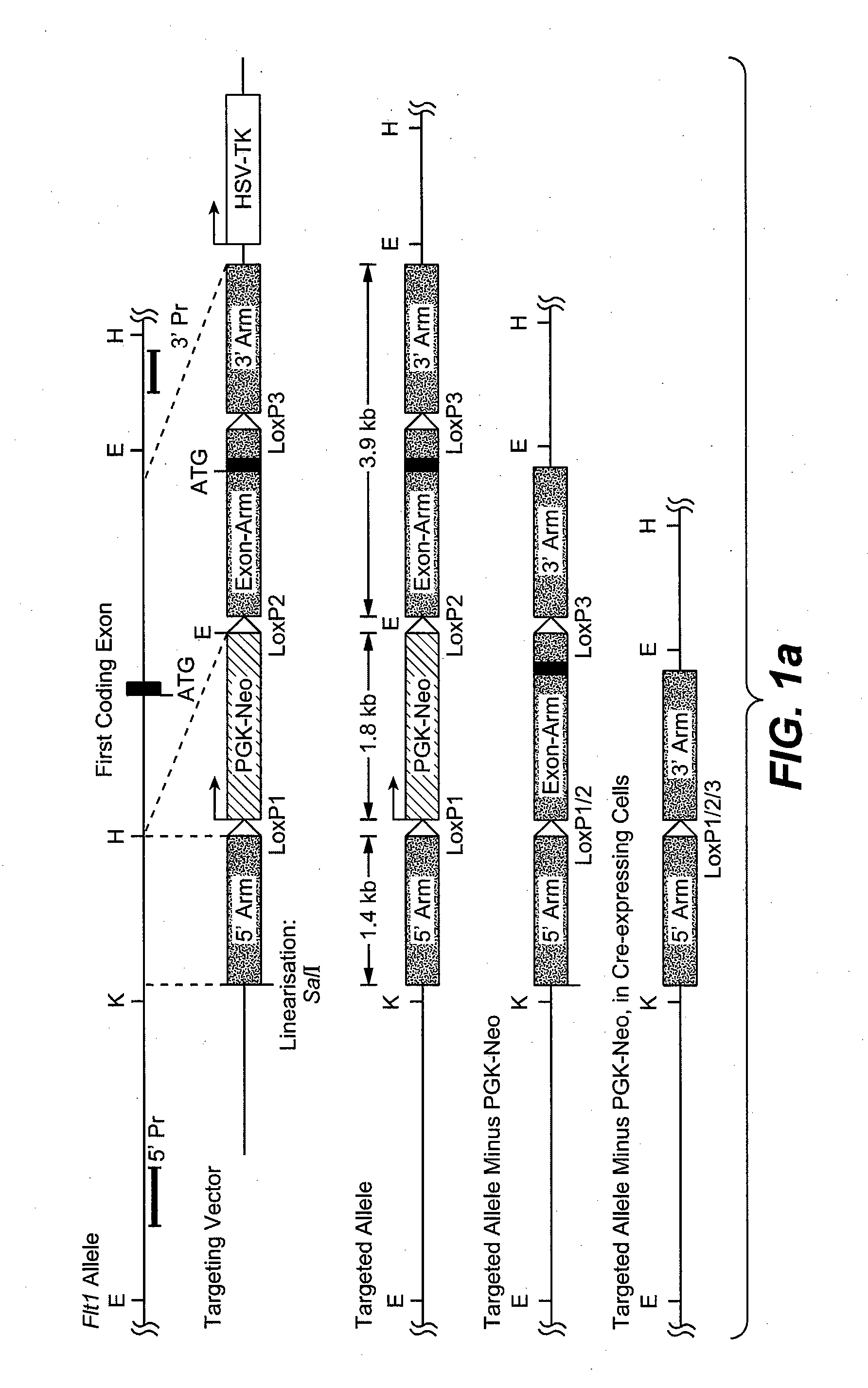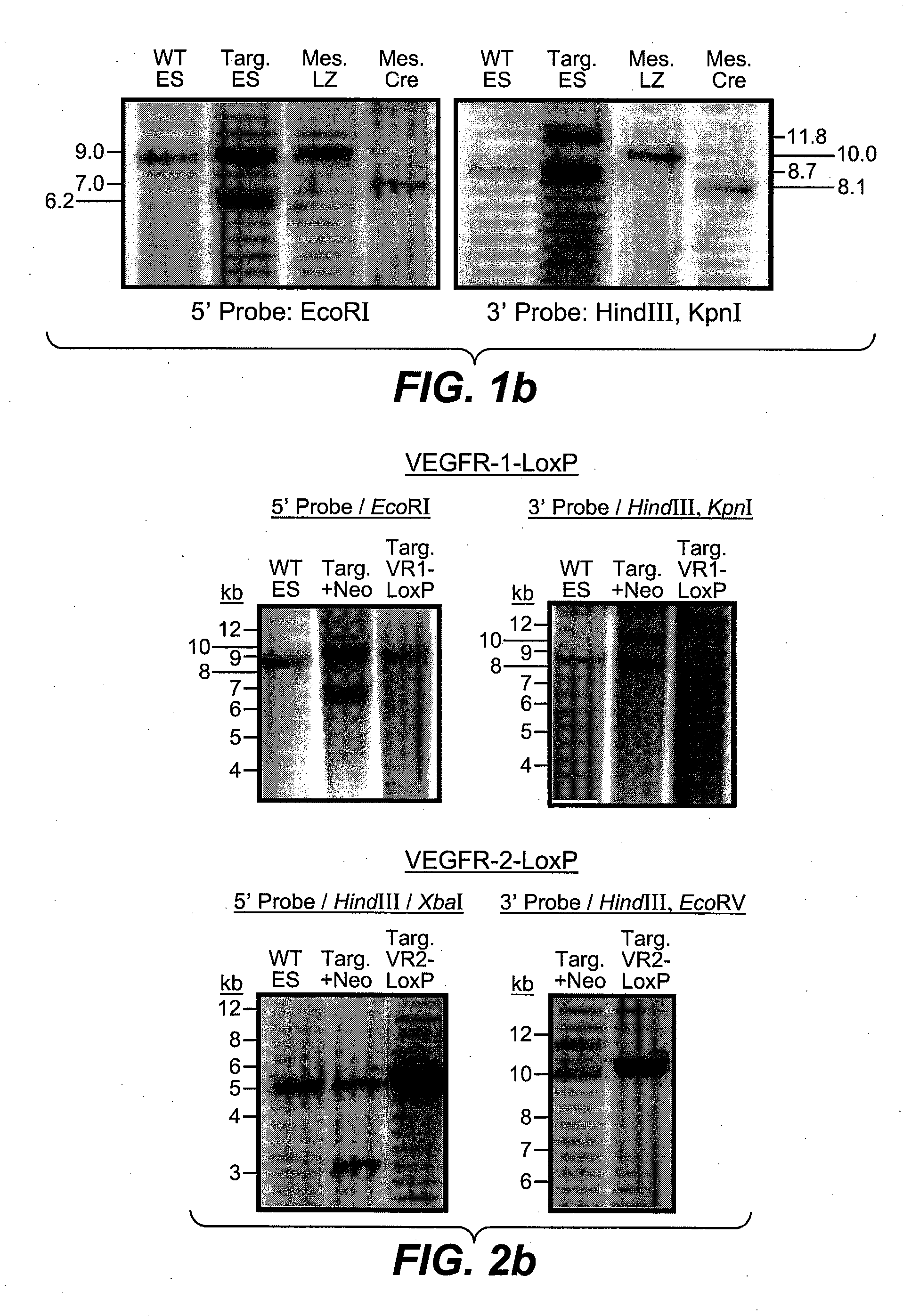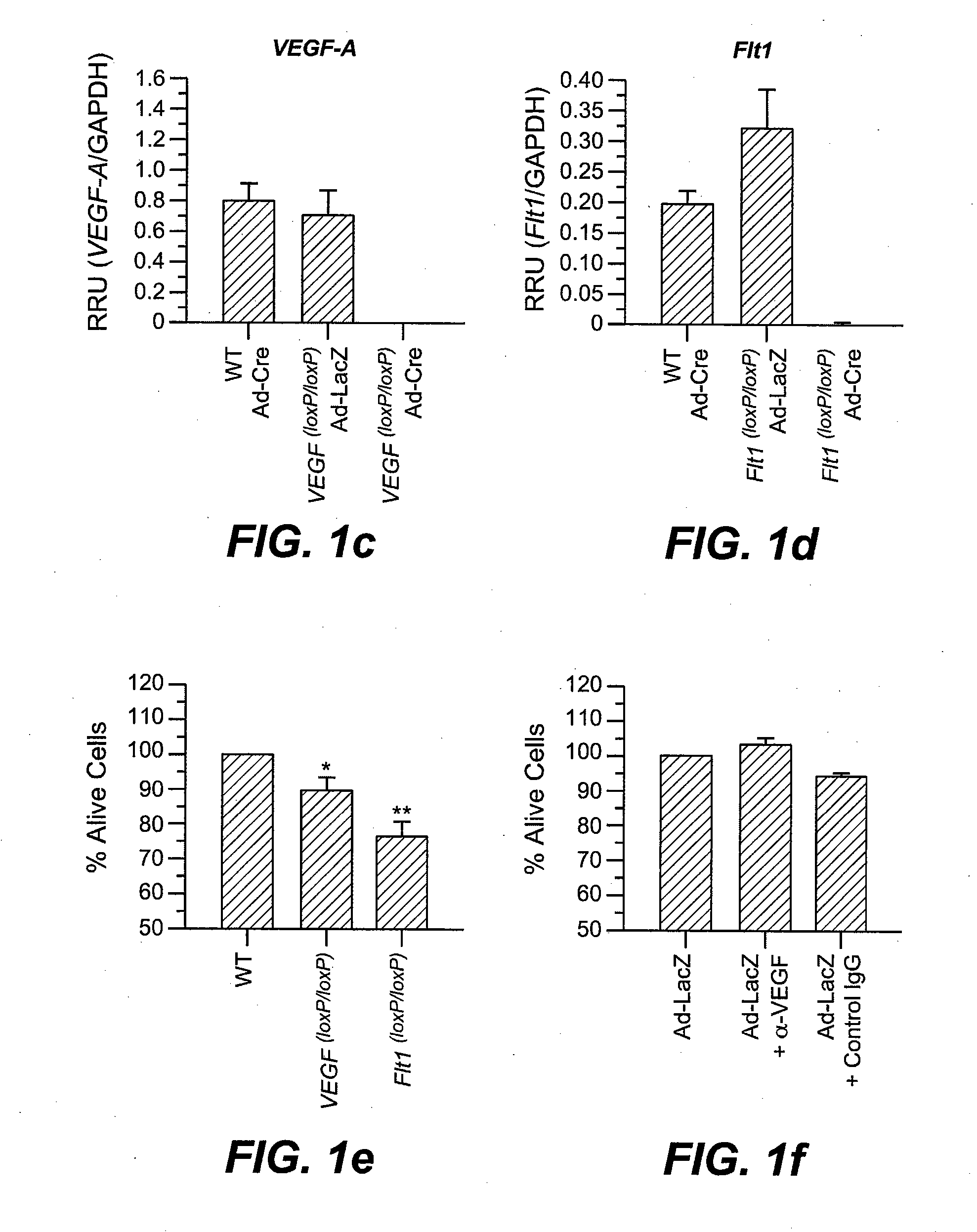VEGF Receptor Conditional Knockout Animals and Methods of Use
a conditional knockout and vegf receptor technology, applied in animal/human proteins, viruses/bacteriophages, peptides, etc., can solve the problems of preventing analysis of the function of these receptors, unclear role of these receptors in early postnatal life and in adulthood, etc., to reduce or no significant expression of vegfr gene, and no functional vegfr protein
- Summary
- Abstract
- Description
- Claims
- Application Information
AI Technical Summary
Benefits of technology
Problems solved by technology
Method used
Image
Examples
example 1
Conditional Flt-1 and KDR Knockout Mice
[0123] To assess the role of VEGFR-1 and VEGFR-2 in postnatal development, the Cre-LoxP system was utilized to generate conditional knockouts of either receptor. To generate VEGFR-1-LOX and VEGFR-2-LOX mice, the gene-targeting strategy that is shown schematically in FIG. 2a was designed to delete the first coding exon and a region of the promotor immediately upstream of Exon1. In both cases, a targeting vector containing a PGK-neo cassette and three 34-base-pair LoxP sequences was electroporated into mouse embryonic stem cells. Following selection and identification of homologous recombinants, Cre-recombinase was transiently expressed to mediate LoxP recombination. Embryonic stem cell clones in which the PGK neo cassette was removed but two LoxP sites that flank exon 1 were maintained, were identified and confirmed by polymerase chain reaction and Southern blot analysis. See FIG. 2b. Two independently derived ES cell clones for the VEGFR-1-LOX...
example 2
Generation of VEGF-loxP and Flt1-Cre Mice and Breeding to the ROSA26 Reporter Strain
[0134] Generation of VEGF-loxP and Flt1-Cre mice and breeding to the ROSA26 reporter strain: VEGF-loxP mice were generated as previously described (see, e.g., Gerber, H. P., et al. (1999a). VEGF is required for growth and survival in neonatal mice. Development 126:1149-1159). Briefly, in VEGF-loxP mice, exon 3 of VEGF is flanked by loxP sites, resulting in a null VEGF allele in cells that undergo loxP recombination. VEGF-loxP mice were bred with Flt1-Cre mice in which a 3.1 kb fragment of the Flt1 promotor (see, e.g., Gerber, H. P., et al. (1997). Differential transcriptional regulation of the two vascular endothelial growth factor receptor genes. Flt-1, but not Flk-1 / KDR, is up-regulated by hypoxia. J Biol Chem 272:23659-23667) drives expression of Cre-recombinase. Flt1-Cre mice were generated by microinjecting a construct containing a 3.1 kb fragment of the Flt1 promotor, driving expression of Cre...
PUM
| Property | Measurement | Unit |
|---|---|---|
| diameter | aaaaa | aaaaa |
| resistance | aaaaa | aaaaa |
| hygromycin resistance | aaaaa | aaaaa |
Abstract
Description
Claims
Application Information
 Login to view more
Login to view more - R&D Engineer
- R&D Manager
- IP Professional
- Industry Leading Data Capabilities
- Powerful AI technology
- Patent DNA Extraction
Browse by: Latest US Patents, China's latest patents, Technical Efficacy Thesaurus, Application Domain, Technology Topic.
© 2024 PatSnap. All rights reserved.Legal|Privacy policy|Modern Slavery Act Transparency Statement|Sitemap



